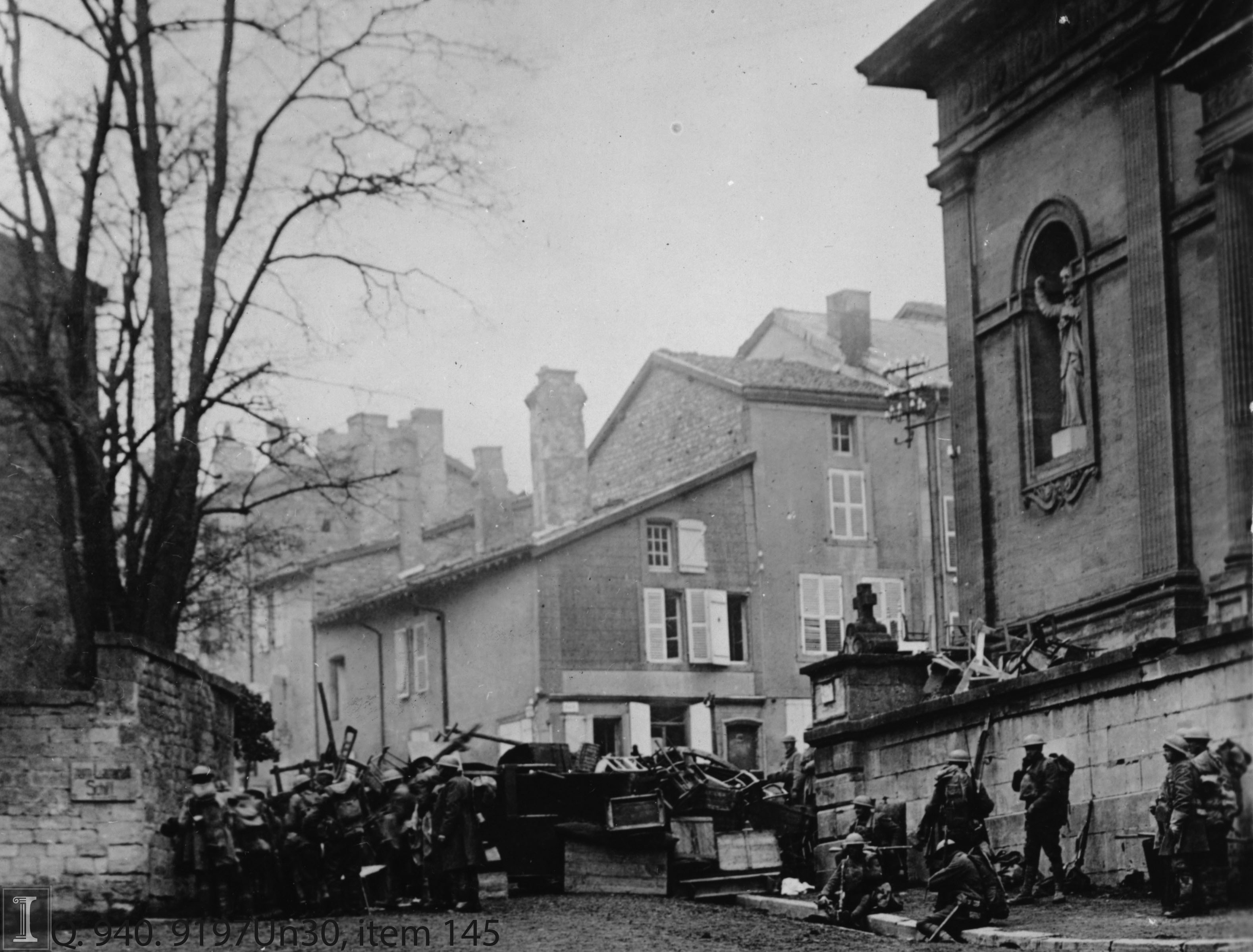For Veterans Day 2014, we have invited our colleague Kevin T. McLaughlin to reflect on the impact of the Great War on our local community.
– Tony Hynes, Dennis Sears, Caroline Szylowicz, curators of the exhibition First Global Conflict: Contemporary Views of the Great War, 1914-1919. (On exhibit until December 19 in the Rare Book & Manuscript Library)

On Veterans Day of the Centennial of World War I, it is tempting to view events of such historical significance as this conflict at the global or national level. However, that conflict had an impact on our state, our community and our university. During WWI, the ground school for the School of Military Aeronautics was located here at the University of Illinois. Chanute Air Field was located in Rantoul because of its proximity to the ground school and the East Central Railroad. If you want to learn more, you may want to pay a visit to the Chanute Air Museum in Rantoul. Busey Residence Hall was used to quarter the students (cadets) of that school. To this day, a commemorative plaque may be found inside one of the entrance halls to that dormitory. Kenney Gym—previously known as the Gym Annex—was used as a laboratory for constructing wooden biplanes. The Armory—which is home to Army, Navy & Marine Corps, and Air Force ROTCs was dedicated on November 1, 1914. The United States Army, the longest tenant of the Armory, maintain a nice link to the history of the Department of Military Science or Army ROTC. Memorial trees planted just outside the Armory were dedicated to U of I soldiers who died during WWI. A few medallions may still be found near some of the trees. And, of course, Memorial Stadium was built as a memorial dedicated to the 189 U of I students and alumni who died in WWI. Their names have been engraved on the colonnades of that arena and may also be found on the University of Illinois Alumni Association’s Veterans Memorial Project website which includes a list of Gold Star Illini who died in WWI as well as the names of Illini who have died in conflicts since then. The U of I’s Department of Chemistry was also very prominent in doing research for the War Department, as documented in the Bulletin for the History of Chemistry (“Noyes laboratory, an ACS National Chemical Landmark: 100 Years of Chemistry at the University of Illinois,” vol. 29, 1, p. 46). There is a U.S. Army Reserve Chemical unit located in Urbana which may have been lured here because of the research being conducted at the University. The 33rd division—comprised of mostly of National Guard units from Illinois—has a connection with the university from this time period and an even longer connection with Champaign-Urbana. The Illinois State Library has put together a collection of digitized documents related to Illinois’ participation/response to World War I including one entitled “Response of the University of Illinois to the Call of War.” Many of these historical connections can be researched locally at the University Archives and at the Champaign County Historical Archives. Champaign-Urbana and campus resound with the echoes of our rich military history.
Kevin T. McLaughlin
MSW, Class of ‘18
MSLIS, Class of ‘04
LAS/Anthropology, Class of ‘88
Senior Library Specialist/Serials
Government Documents Cataloging & Processing Team